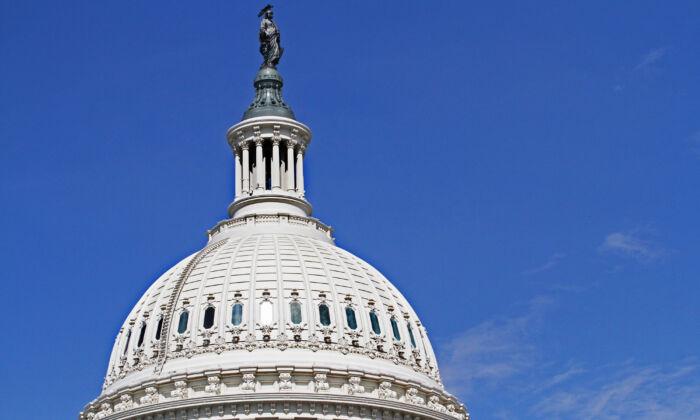The U.S. national debt has surpassed $32 trillion for the first time in U.S. history, Treasury Department data released on June 17 showed.
The national debt as of June 16 is at an all-time high of $32.04 trillion, according to the Treasury’s daily statement (
pdf).
This represents about $25 trillion in debt held by the public, and about $7 trillion in intragovernmental debt (
pdf).
It comes less than two weeks after
President Joe Biden signed into law the Fiscal Responsibility Act. One provision of the June 3 legislation suspends the debt ceiling for 19 months, which means the government can continue to borrow money until the end of 2024.
The
debt limit was previously increased in December 2021 to $31.4 trillion.
On June 3, the total national debt was $31.47 trillion, but the business day immediately after Biden signed the bill, federal borrowing increased by nearly $400 billion.
The Congressional Budget Office
projects the federal deficit for fiscal year 2023 to be $1.4 trillion.
Although the legislation Biden signed also included some $1.5 trillion in
spending cuts over the next decade, under the Biden administration’s
2024 budget proposal, the gross national debt is projected to exceed $50 trillion by 2033.
That’s over $17 trillion over the next decade, which would be more than the entire national debt held by the public before COVID-19.
The federal government surpassed the $31 trillion mark on Oct. 2, 2022—just over eight months ago.
The $32 trillion mark was reached nine years sooner than what had been projected prior to the COVID-19 pandemic, largely due to trillions of dollars of congressionally-approved COVID-19-related spending.
‘Debt Addiction’
“We can’t even get through a single fiscal year anymore without adding a trillion dollars in debt, and $33 trillion is likely just around the corner,” Maya MacGuineas, president of the Committee for a Responsible Federal Budget, said in a
statement.
“Our debt addiction saddles the next generation with a debt burden that only grows larger so long as we insist on ducking the hard choices of governing.
“We need a return to responsible fiscal policy if we’re ever going to get ourselves out of this mess. The formula to get there should be simple: no new borrowing—meaning fully offset all new spending or tax cuts—and better yet, hold off on them until our debt is under control; address the drivers of our runaway debt; and reform our broken budget process. It’s not rocket science—it’s pretty darn straightforward, and it’s time for our politicians to get to work before it’s too late.”
Michael A. Peterson, CEO of the Peter G. Peterson Foundation, a nonprofit that supports reducing the national debt and limiting the growth of social security and Medicare, echoed similar sentiments.
“We were fortunate to avoid a default under the debt ceiling, but the broader problem is that we keep ignoring the growing debt itself. As we race past $32 trillion with no end in sight, it’s well past time to address the fundamental drivers of our debt, which are mandatory spending growth and the lack of sufficient revenues to fund it,” he said in a
statement.
“Doing nothing is not an option because critical social programs are heading to insolvency, and we’re on a path to add a staggering $127 trillion to the debt over the next 30 years. By 2053, nearly 40 percent of all federal revenues will be spent on interest alone—an unthinkable burden for us to place on future generations.”
House Republicans earlier this month
unveiled a major tax cut proposal that seeks to grow jobs, bolster small businesses, and provide relief to inflation-squeezed households by leaving more of their hard-earned dollars in their wallets.
Meanwhile, Democrat lawmakers
have introduced a bill that would essentially let Treasury ignore the debt cap and continue writing cheques with no limit. The Debt Ceiling Reform Act would
authorize the Treasury Department to keep paying the government’s bills regardless of the statutory debt limit—unless Congress expressly says no.
Tom Ozimek contributed to this report.





